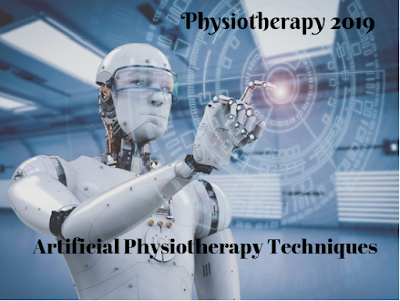Devoting to Advancing Spine care and Improving the Quality of Life
Spine and Spine Disorders
This spinal column provides the main support for your
body, allowing you to stand upright, bend, and twist, while protecting the
spinal cord from injury. Strong muscles and bones, flexible tendons and
ligaments, and sensitive nerves contribute to a healthy spine. Yet, any of
these structures affected by strain, injury, or disease can cause pain.
The spine consists of 26 bones called vertebrae, which
protect and support the spinal cord and nerves. Several conditions and injuries
can affect the spine, which can damage the vertebrae, cause pain, and limit
mobility.
Our neurosurgeons, orthopedic surgeons, physiatrists,
pain physicians, psychologists, and other specialists have extensive experience
in treating even the most complex spinal conditions, giving our patients access
to an array of expertise to help improve their pain and quality of life.
Numerous conditions can affect the spine anywhere from
the neck to the lower back. Some of the many spine disorders we treat
are:
Degenerative
spine and disc conditions:
·
Arthritis
·
Degenerative disc disease
·
Herniated disc
·
Spinal stenosis
·
Spondylosis
·
Other spine conditions and disorders:
·
Ankylosing spondylitis
·
Back pain
·
Basilar invagination, basilar impression,
and cranial settling
·
Chronic spine and back pain
·
Kyphosis
·
Neck pain
·
Osteoporosis and vertebral fractures
·
Scheuermann's kyphosis
·
Scoliosis
·
Spinal cord cancer
·
Spinal deformities
Spine disorders have a wide variety of causes
depending on the particular condition. For some conditions, the causes are
unknown. Common causes include:
·
Accidents or falls
·
Congenital disorders (present since birth)
·
Inflammation
·
Infection
·
Inherited disorders
·
Injuries ranging from minor to traumatic
·
Degenerative wear and tear that comes with
aging
·
Risk Factors for Spine Disorders
·
Factors that can increase the risk of
developing a spine disorder include:
·
Excess weight or obesity
·
Improper lifting techniques
·
Nutrition and lifestyle habits such as
sedentary lifestyle, low calcium intake, or smoking
·
Other conditions such as osteoarthritis,
rheumatoid arthritis, or thyroid disease
·
Overuse from exercise or occupational
movement
·
Poor posture
·
Repetitive strenuous activities
Signs and symptoms depend on the specific spine
disorder and often affect other parts of the body, depending on the area of the
spine or spinal cord that is affected. Common symptoms include:
·
Abnormally rounded shoulders or back
·
Back or neck pain that can be sharp and
stabbing, dull and aching, or burning
·
Bladder or bowel dysfunction
·
Nausea and/or vomiting
·
Pain radiating in the arms or legs
·
Stiffness or tightness
·
Uneven appearance, such as one shoulder or
hip being higher than the other
·
Weakness, numbness, or tingling in the
arms or legs
·
Diagnosis of Spine Disorders
·
At UT Southwestern, our spine experts
conduct a thorough evaluation, including:
·
Physical exam
·
Discussion of personal and family medical
history
·
Discussion of symptoms and risk factors
·
Neurological exam, if a nerve injury or
disorder is suspected
Our spine specialists often use one or more
treatments, depending on the specific condition or injury. Treatments we offer
include:
·
Back bracing
· Cancer treatment such as surgery to remove
tumors, radiation therapy, radiosurgery, and chemotherapy
·
Ice or heat therapy for injuries
·
Injections, such as corticosteroids or
nerve blocks, for pain
·
Medications such as anti-inflammatories,
pain relievers, or muscle relaxers
·
Rehabilitation using physical therapy to
strengthen and stretch the back and abdominal muscles
·
Surgery to replace discs, fuse (connect)
vertebrae, open the spinal canal, or repair nerves
For more details check out the website: https://physiotherapy.conferenceseries.com/
Contact: Christina Joseph




Hi everyone, 2years ago my doctor told me I was diagnosed with HSV2. I was heart broken, How- ever that same years i found a doctor called Dr ubarlo who helped me to cured the virus with natural herbal treatment per- manently. thanks to Dr ubarlo for his natural herbal treatment that eliminated this virus out in my body forever. his contact of him through Instagram page. for any incur- able virus THESE ARE THE DISEASES CURED BY dr ubarlo 1) HERPES 2) HIV / AIDS 3) lupus 4) CANCER 5) EPILEPSY 6) DIABETES 7) ERECTILE 8) CANCER CURE 9) asthma 10) RIGGING EARS 11) Gout 12) pregnancy 13) Hepatitis ABC 14) Weight loss 15) fibroids you can also contact him on his email drubarlohome@gmail.com or Whatsapp +2348119508814
ReplyDeleteGreat article on spinal disorder!! I got the best treatment of spine issue (Sciatica) from spine surgeon Dr. Sukhdeep Singh Jhawar in Ludhiana, Punjab. Thank you!!
ReplyDeleteIt provides such a nice information. Get more valuable information regarding the service of Spine Surgery in Punjab.
ReplyDeleteThis is excellent and important information which is shared by you. This info is meaningful and important for us to increase our knowledge about it. Thank you. Visit here for more info about Sports Injury Clinic.
ReplyDeleteThis comment has been removed by the author.
ReplyDeleteThanks for sharing the amazing post. For fitness by physiotherapy pls check out
ReplyDeleteFitness by Physiotherapy